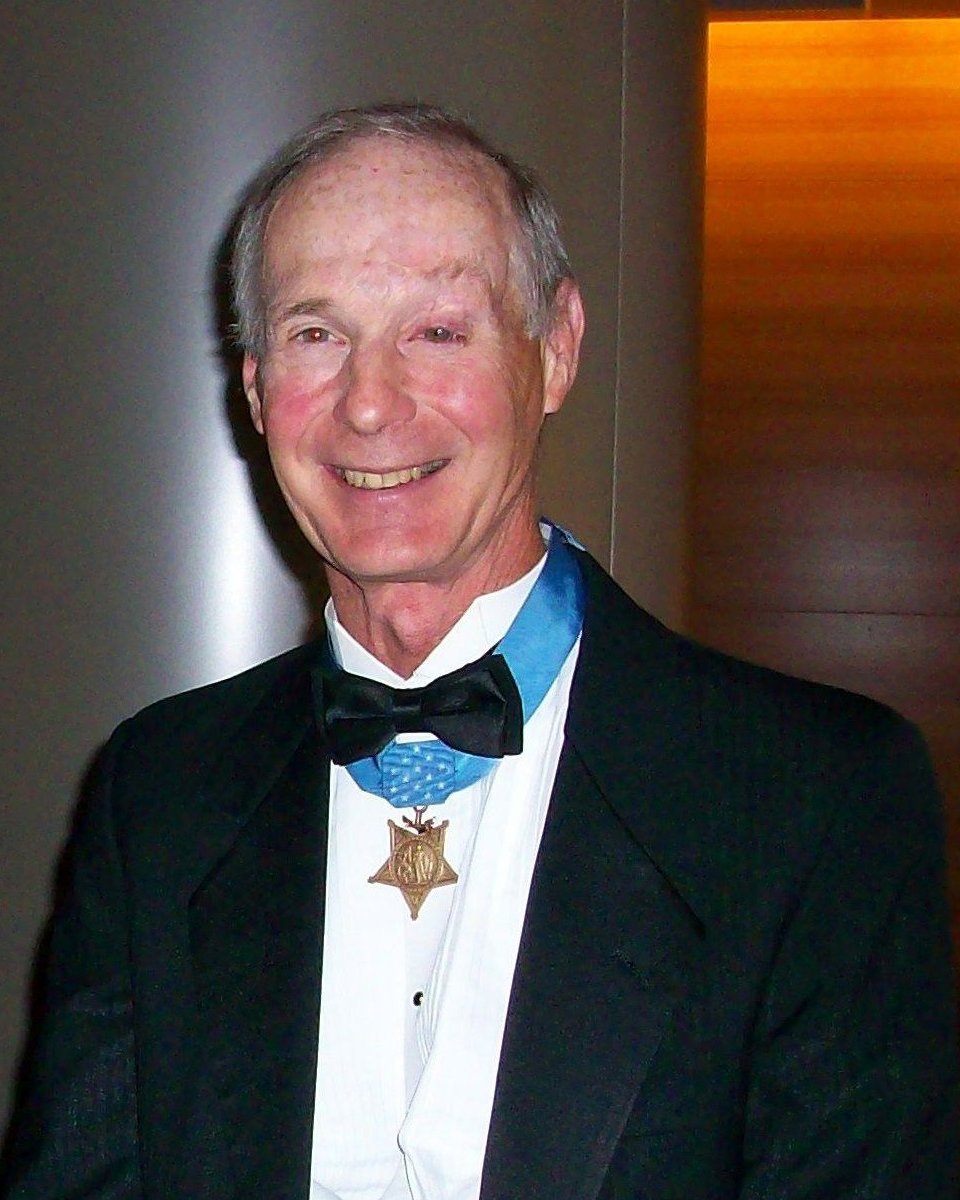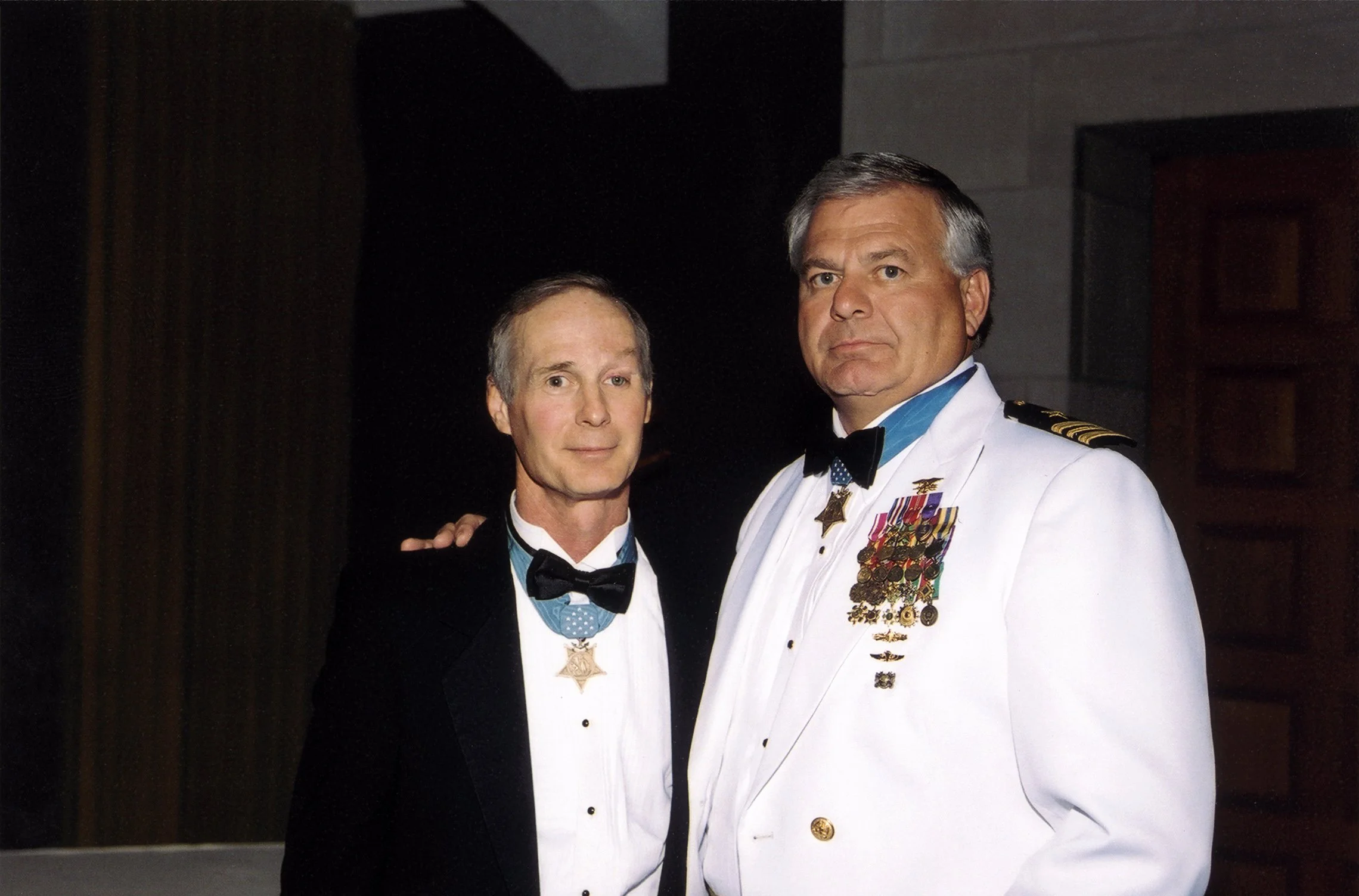Thomas R Norris
Thomas was born on the 14th of January 1944, in Jacksonville, Florida, and his father, Rolland, was in the US Navy at the time. Because of his father’s career, Thomas, his mother, Irene, and his two brothers moved to Michigan, Wisconsin, and finally to Washington DC. Thomas had been an Eagle Scout, as well as running in track and wrestling, and he graduated high school in 1963. He went on to attend the University of Maryland where he also wrestled, becoming the Atlantic Coast Conference’s champion in 1965 and 1966. Thomas graduated with a bachelor’s degree in criminology and sociology in 1967, and soon after enlisted in the US Navy, following in his father’s footsteps.
Thomas was then commissioned and wanted to fly A4s for the Navy but had some depth perception issues with his vision. He then read about the SEAL teams and was able to transfer out of the flight program and began the training for the Navy SEALs. Thomas was almost removed from Basic Underwater Demolition / SEAL training due to some difficulty but was allowed to continue and graduated with class 45 in July of 1969. His first deployment to the Republic of Vietnam was with SEAL Team 2 in February of 1970, where he earned a Bronze Star with combat valor device. It was during his second deployment to Vietnam that Thomas would display actions that would earn him the Medal of Honor. The citation reads:
Lt. Norris completed an unprecedented ground rescue of two downed pilots deep within heavily controlled enemy territory in Quang Tri Province. Lt. Norris, on the night of 10 April, led a five-man patrol through 2,000 meters of heavily controlled territory, located one of the downed pilots at daybreak, and returned to the Forward Operating Base (FOB). On 11 April, after a devastating mortar and rocket attack on the small FOB, Lt. Norris led a three-man team on two unsuccessful rescue attempts for the second pilot. On the afternoon of the 12th, a forward air controller located the pilot and notified Lt. Norris. Dressed in fishermen disguises and using a sampan, Lt. Norris and one Vietnamese traveled throughout the night and found the injured pilot at dawn. Covering the pilot with bamboo and vegetation, they began the return journey, successfully evading a North Vietnamese patrol. Approaching the FOB, they came under heavy machine-gun fire. Lt. Norris called in an air strike which provided suppression fire and a smoke screen, allowing the rescue party to reach the FOB. By his outstanding display of decisive leadership, undaunted courage, and selfless dedication in the face of extreme danger, Lt. Norris enhanced the finest traditions of the U.S. Naval service.
Six months after these actions in April of 1972, Thomas was shot in the face during another mission, receiving severe head injuries. He was rescued by a fellow SEAL, Michael Thornton, who received the Medal of Honor for doing so.
Thomas was medically retired because of his injuries, and it would take many years and many surgeries for his rehabilitation. He was asked by the SEAL teams to write up what had happened during the April of 1972 mission so that they could recommend him for the Medal of Honor. Thomas says that he disagreed with this at the time but was told that he was being recommended regardless if he wrote it up or not. He was notified in 1974 that he would be receiving it, but the ceremony didn’t take place until the 4th of March 1976. Michael Thornton was present, in addition to Thomas’ parents, brothers, sister-in-law, niece, and nephew, to both meet with President Ford and to watch him receive the Medal of Honor at the White House.
Prior to joining the Navy, Thomas had wanted to join the FBI, and once recovered, he was able to get a waiver and became an FBI agent in 1979, where he worked for 20 years and was an original member of their hostage rescue team as an assault team leader.
Thomas Rolland Norris is 79 years old as of this recording, and in 2016 he and Michael Thornton wrote a book called, “By Honor Bound: Two Navy SEALs, the Medal of Honor, and a Story of Extraordinary Courage”, which includes a preface written by Drew Dix and a foreword by Robert Kerrey, both Medal of Honor recipients.













